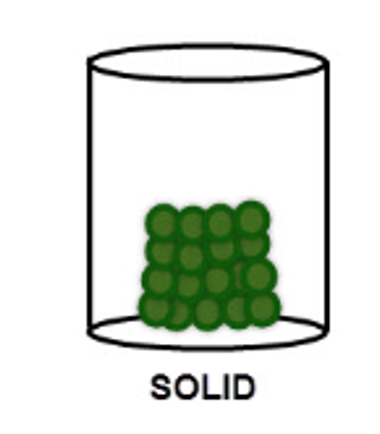Everything around us exists in one of the three states of matter. Things can be solid, liquid or gas!
Take a look around you now. You can probably see lots of things that would be classed as solids. Your chair, your desk, a pen..... maybe you can see a cup or a plastic toy. All solids! We can tell they're solids because they can be held in your hand (if they're not too heavy!) as they have a fixed shape.

The reason why solids have these properties is because of the way their particles are arranged.
In a solid, the tiny particles that make up the solid are very close together in a neat regular arrangement, all touching each other and moving only by vibrating on the spot. They cannot move much at all, which explains why solids have a fixed shape. This means they cannot be compressed (squashed).

Liquids, on the other hand, have quite different properties to solids. When we talk about liquids we mean things that can be poured or flow, such as honey, water or milk. Liquids do not have a fixed shape like solids. Liquids will take the shape of the container they are in.

The reason why liquids have these properties is because of the arrangement of their particles. Now particles in a liquid can move more than particles in a solid. They are mostly still touching other particles, but they can move over each other a bit because they have small gaps between them. They move even faster than particles in a solid, and are arranged in a random way, unlike the neat and regular arrangement of particles in a solid.

So. Think you know all there is to know about solids and how they are different from liquids now? Great! Then let's take a look at a few questions.








